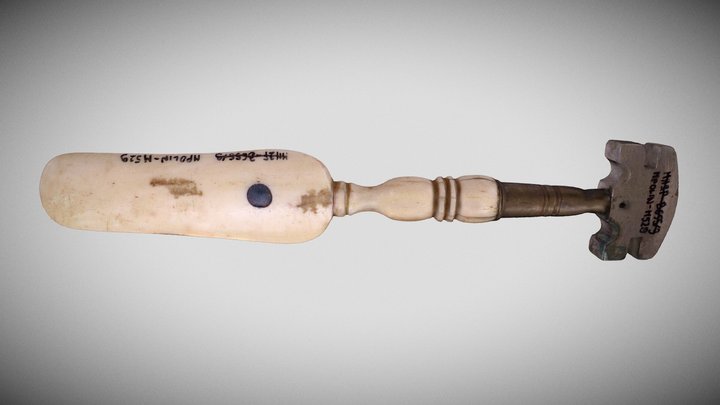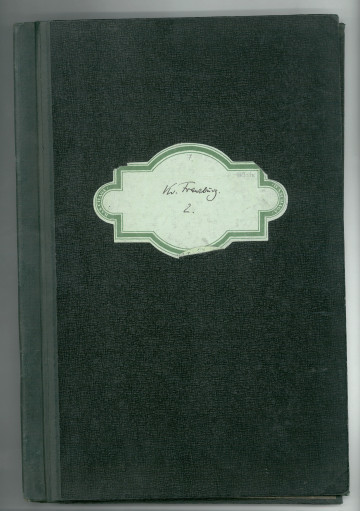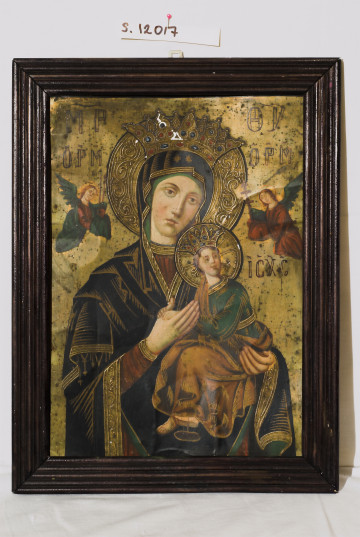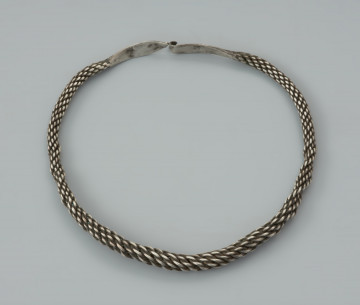
Glass cutting knife
1900 — 1939
Museum of the history of Polish Jews
Hana and Dawid Diatłowicki left Warsaw in September 1939 and stayed with Dawid’s parents in Łuck (present-day Lutsk, Ukraine). In April 1940, they were all arrested and exiled by the NKVD to Siberia. It was the so-called second deportation, one of the four waves of deportations of prewar Polish citizens to the Soviet hinterland. The second wave involved families of people deemed to be enemies of the Communist system. Recalls Jerzy Diatłowicki, son of Dawid and Hana, born in exile:
"When the Russians entered the city, on the 18th or perhaps the 19th, some high school students allegedly were shooting at the Red Army. My father’s youngest brother, Abraham, was allegedly among them. Beautiful, sixteen-year old boy. Were they really shooting, or weren’t they—nobody knows. . . . What we do know is that they took the boy and he vanished without a trace. And that is how the Diatłowickis, being the family of an anti-Soviet subversive, were selected for the second round of deportations . . . . (Judyta Pawlak and Przemysław Kaniecki, eds., "Przynoszę rzecz, przynoszę historię. Rozmowy z darczyńcami" [Warsaw: Muzeum Historii Żydów Polskich, 2016] 145)
They had two hours to pack. Dawid’s mother, Klara Diatłowicka, took the most necessary things. His his father, Józef, on the other hand, clearly dazed and unable to think straight, took items such as a heavy mortar with a pestle and a large Ćmielów platter. By accident, he also packed a diamond which was used to cut glass and eventually saved the family, allowing Józef to earn enough money to support them.
The family was deported to Kazakhstan. A year later the Soviet German war broke out, and a great evacuation began—not only of industrial plants but also offices. Some ended up in Kazakhstan, too. “An office is an office once it has a signboard,” explains Jerzy Diatłowicki. “It needs to say: a such-and-such office is located here. They all knew it, and began to produce signboards frantically. But they needed resilient material to produce them, and glass was the only one available. Information may even be written on a piece of paper, as long as it is shielded by glass—then it will withstand both rain and snow. They did have glass, but in large sheets that needed to be cut.” That is how Józef Diatłowicki became a very popular craftsman. He did not accept money for his work; instead, he asked for food, or anything that could be exchanged for food.
The Diatłowicki family brought the diamond back to Poland. It does look well-used. A grandson donated it to the POLIN Museum. Other items returned to Poland as well. Jerzy Diatłowicki gave some of them to his son; the rest—including the diamond—he donated to the POLIN collection: the Ćmielów platter (chipped, allegedly after the return to Poland), a cane purchased by his grandfather in Kostanay, one of his tefillin.

around 1935
National Museum in Szczecin

XIX century
Castle Museum in Łańcut

966 — 1100
National Museum in Szczecin
DISCOVER this TOPIC
Castle Museum in Łańcut
DISCOVER this PATH
Educational path